|
There are a few guarantees in this life. Some say it is death and taxes. Purdue basketball fans, such as myself, will add Matt Painter. But there is another guarantee in life, and it is one that is as uncomfortable and taboo as death: suffering. Death, taxes, Matt Painter, and suffering. The suffering we think of most often is typically connected to death - the suffering of a cancer patient or of someone who has been in a tragic accident. This suffering is very real, but also extraordinary. I do not mean that this suffering is somehow alien to the human experience; it is deeply real and personal to those who experience it and their loved ones, but that it is truly extra (outside of the) ordinary. Ordinary suffering comes in many forms: the lack of sleep felt by new parents, the inability to pay one’s bills after being laid off, the end of a relationship that seemed to be perfect, the inexplicable change in direction from the Lord after following a path that seemed ordained by that same God. These, and countless other examples, are the suffering of the day-to-day life of the human person. There is a human tendency to compare suffering. “Well, their suffering seems so much worse than mine, so mine must be insignificant, and my response to my suffering is somehow overblown or distorted.” But this reaction is what is distorted. Suffering is, as I said at the start of this blog, guaranteed in life. That is a pretty undesirable guarantee. All we have to do is look out into the world, or just rewatch the movie of our own lives to find some sort of suffering, whether great or “small.” The question is not if we will suffer, but how we handle suffering and what it does in our lives. I am personally unable to understand how one can endure suffering without some sort of conception of God, and more specifically a personal relationship with the God who became man and who suffered and died for us. It is just that relationship that has gotten me through the traumatic death of my father just over five years ago and the daily suffering that is thrown my way. Suffering can easily make a strong person crumble, so the first thing we should do is realize that we are not strong, but weak. We are the sick that Jesus professes need a physician in the Gospel of Matthew. The physician is the only one who can prescribe the medication of grace needed to help us through our suffering. The grace is dispensed to us not through pills or syringes but through prayer. It is only through constant prayer, which is the reception of the transformative love of God, that suffering has meaning and can be endured. Sr. Ruth Burrows says in her book Essence of Prayer that God’s touch in our lives, “however lightly, means I suffer,” (Burrow, 38). Prayer opens us up to the fact that we are nothing, we are weak, we are in great need and, “it is then that I really experience that I need Jesus and everything depends on my living this out, letting go of the controls, handing them over to him and accepting to have no holiness, no achievement of my own, to be before God as nothing,” (ibid, 39). This is the bottom line of suffering. It is not gratuitous, meaningless, or completely nonsensical; it is the process of being stripped of all of our egotistical and self-seeking tendencies that leave us closed off to God’s healing touch. Patient endurance of the suffering we experience is the way that we are prepared for life with God. How do we know this? Because Jesus Christ took on human form and lived in perfect obedience as the Apostle to the Eternal Father. Jesus’ life found its highest fulfillment in obedient suffering and sacrifice in the Garden of Gethsemane, at the Pillar, on the road to Calvary, and on the Cross. In his suffering, Christ took on all of ours - from the suffering of a broken heart to the suffering of death - and brought them meaning. In fact, it was the signs of his suffering that he kept after his resurrection as trophies of his victory over death. It was these same signs of suffering, Jesus’ wounds, that proved the resurrection to Thomas. Our wounds, our suffering, participate in the suffering and wounds of Christ. Thomas experienced the Risen Christ in His wounds, and we too experience Him in our wounds. Suffering is a guarantee, but it does not end as pain- it leads us to victory, to intimacy with God, and brings us to God as empty vessels for him to fill with his glory.
0 Comments
I’m not much of a poetry person. I did what I could to avoid it in middle and high school, as well as college. But there is one poem that I like—in fact, that I love. It goes like this: “Hope” is the thing with feathers - That perches in the soul - And sings the tune without the words - And never stops - at all - And sweetest - in the Gale - is heard - And sore must be the storm - That could abash the little Bird That kept so many warm - I’ve heard it in the chillest land - And on the strangest Sea - Yet - never - in Extremity, It asked a crumb - of me. That is “Hope is the Thing with Feathers” by Emily Dickenson. I always liked the poem, the way it rhymes and the way it rolls off the tongue. It became even more important to me when my father became ill. I clung to this poem because it reminded me that hope is always with us; that even in the greatest storm, hope remains and remains without ceasing. As Christians, we cling to hope. This season of Lent which we find ourselves in right now is a period that prepares and leads us to that ultimate instance of hope in the Christian life: the Resurrection. Much like the hope that Dickenson writes of in her poem, the hope of the Resurrection remains with us at all times. It never stops, it remains with us in our souls, and it is, if I may create a word, “unabashable.” The thing is, it can be hard to see this hope in our lives, regardless of its unceasing presence. Pope Francis dedicates two paragraphs of Fratelli Tutti to the virtue of hope. He writes: Hope speaks to us of a thirst, an aspiration, a longing for a life of fulfillment, a desire to achieve great things, things that fill our heart and lift our spirit to lofty realities like truth, goodness and beauty, justice and love… Hope is bold; it can look beyond personal convenience, the petty securities and compensations which limit our horizon, and it can open us up to grand ideals that make life more beautiful and worthwhile” (Fratelli Tutti, 55). Hope transcends our ups and our downs, our individual trials and tribulations, not because they are insignificant, but because the Resurrection, in the end, is greater than every one of those. The hope of the Resurrection doesn’t minimize our trials, or even our personal convenience and petty securities, but it is the light which illuminates the darkness and allows us to move past them on our journey with Christ. The hope of the Resurrection, the hope of Christ perches in our soul and it sings the tune of Alleluia (pardon my use during Lent) without ceasing. This hope, much like the little bird that Dickenson describes, is in fact sweetest in the gale, in the storm, because we are called to recall that Jesus Christ will provide for us in ways that no other person or thing ever can. In the midst of Lent, much like through all of our sufferings, hope can be heard as a melodious tune above the groans of those trials which we face. May we look to hope, the thing with feathers, the Resurrection, this Lent and always. For more resources to accompany you during your Lenten journey, please click here. **This blog was originally published on March 16, 2021.**
A few weeks ago, the Pew Research Center released an article titled “Just one-third of U.S. Catholics agree with their church that Eucharist is body, blood of Christ.” Immediately after the study’s release, social media erupted with reactions of disbelief, shock, and anger, as well as theories of how to “fix this,” including greater catechesis and adjustments to our general liturgical practices. Despite the immediate reaction, there is no need for panic, as Christ assures the Church that “the gates of the netherworld shall not prevail against it,” (Matthew 16:18). Furthermore, jumping to such dire conclusions after one survey is not necessarily good pastoral or catechetical practice. As the Church examines the status of belief in the Real Presence and how to cultivate a greater understanding of that reality, she is also very aware of the need to deepen our encounter with Christ. As we ponder Christ’s presence in the Eucharist, we must ask ourselves if we have truly encountered him. In his encyclical letter Evangelii Gaudium, Pope Francis suggests that we “look at those first disciples, who, immediately after encountering the gaze of Jesus, went forth to proclaim him joyfully: ‘We have found the Messiah!’ (Jn 1:41).” In the end, how we catechize and what our liturgical practices are both require deeper reflection and greater discernment as to how God is calling us to use them as methods of ongoing conversion and evangelization. The doctrines and dogmas that we teach, how we celebrate the Mass, how we best serve our fellow man, are all likely to fall on deaf ears if they are not built on a deep and personal encounter with the Risen Christ. To examine this issue of Eucharistic belief, we should first look to chapter 4 of Christus Vivit, where Pope Francis reminds young people (and all of the people of God) that God is love, he saves us, he gives us life, and he is alive! If these four truths, which are expounded upon in good catechesis and experienced in their fullness in the Mass, are not understood deeply and intimately in the heart of every baptized Catholic, then moving forward will be extremely difficult. If I do not know Christ as the one who saves me, who walks with me through my life, as the one who gives me life, then why does it matter if it is truly his Body and Blood that I receive in its fullness at the Mass? Similarly, if we don’t understand the Kerygma—the mystery of the salvific work of God culminating in the passion, death, and resurrection of Christ—then how can we begin to understand the mystery of transubstantiation (CCC1376), especially when philosophical distinctions like matter and form aren’t in the everyday vocabulary of most Catholics? Pope Francis reminded pilgrims of this reality during a November 2017 General Audience when he said, “Every celebration of the Eucharist is a ray of light of the unsetting sun that is the Risen Jesus Christ. To participate in Mass, especially on Sunday, means entering in the victory of the Risen, being illuminated by his light, warmed by his warmth.” Pope Emeritus Benedict XVI famously wrote in his encyclical letter Deus Charitas Est, “Being Christian is not the result of an ethical choice or a lofty idea, but the encounter with an event, a person, which gives life a new horizon and a decisive direction.” I certainly don’t have the “easy fix” answer as to how to increase belief in the real presence in the Eucharist, but I heartily believe that it begins with a renewed sense of the encounter Pope Benedict XVI was writing about. We use the word “renewed” because even those of us who profess our faith in the Risen Lord are invited “to a renewed personal encounter with Jesus Christ, or at least an openness to letting him encounter them; I [Pope Francis] ask all of you to do this unfailingly each day” (Evangelii Gaudium). We must witness to the encounter that has given our lives “a new horizon and a decisive direction,” and share that with those whom we meet. When we accompany our brothers and sisters on their journey to know Christ more fully, we help them to encounter him in the way that the Holy Spirit guides them. If that encounter is through theological and philosophical distinctions, through service, through the liturgy, etc. then praise God, because it is through him that those are effective and not because of their own merits. As we continue to wrestle with this recent study and its implications, may we meditate on this: if we believe that the Eucharist changes us, strengthens us, heals us, then we must show it, we must witness to it authentically and humbly in all circumstances. **This blog was originally published on August 29, 2019.**
Yesterday, July 31, was the feast of St. Ignatius of Loyola, the Spanish spiritual master who gave us the Spiritual Exercises and was the founder of the Society of Jesus, also known as the Jesuits. As a young man, Ignatius served as a page for the treasurer of the kingdom of Castile and would later become an officer in the Spanish army. In 1521, Ignatius was struck in battle by a cannon ball which landed him in the hospital for a year. While in the hospital, Ignatius began to read about the life of Christ and the lives of the Saints, and he experienced a profound conversion. After years of prayer and further education, Ignatius took vows of poverty, chastity, and obedience and, along with other men including Peter Faber and Francis Xavier, formed the Society of Jesus in 1534. Ignatius was ordained in 1538 and the Society of Jesus was officially recognized by Pope Paul III in 1540. Additionally, Ignatius led the Society as its Father General until his death in 1556. Among the many great things that St. Ignatius gave the Church including the Society itself, which has produced many great Saints, and the Spiritual Exercises, Ignatius also gave us a prayer called the Suscipe. As short and simple of a prayer as the Suscipe is, it is equally as powerful. Essential to Ignatius’ spirituality is the fact that all human beings are creatures created by God and are in need of his great mercy and love and that everything we experience in our lives is a gift from God. The Suscipe is, in my estimation, the perfect product of this essential factor of Ignatius’ spirituality. Ignatius’ prayer goes like this: Take, Lord, and receive all my liberty, my memory, my understanding, and my entire will, All I have and call my own. You have given all to me. To you, Lord, I return it. Everything is yours; do with it what you will. Give me only your love and your grace, that is enough for me. As creatures, everything that we are and everything that we have is from God, our creator. Our liberty, memory, understanding, will, possessions, gifts, and talents — every good thing in our lives is a gift from God. The problem is that we, as humans, tend to think that we have done all the good things in our lives. While we certainly have to cooperate with God’s grace, all things are still reliant on his grace. Everything in this world will eventually pass away. Our good looks, quick wit, great intellect, ability to play an instrument, cook great food, or hit a golf ball 350 yards will pass away at some point in our lives. What do we do when we can no longer rely on our physical or mental ability? We can certainly shrivel up into a proverbial ball and pout that our life is over. But life in Christ leads us another direction, the direction of the Suscipe. This direction points us to grace and the necessity of grace in our lives. Even when all the other good things in our lives are gone, God’s grace will remain. God’s grace will sustain us when nothing else can and will be there when everything else fades away. Let’s have the courage to rely solely on God’s grace which is all that we need. St. Ignatius of Loyola, pray for us!
Since 2017, apart from 2019, I’ve been involved with a youth summer program called Light the World! Summer Institute and have served as the program’s director since 2020. At Light the World!, high schoolers from around the world join us at The Catholic University of America in Washington D.C. to explore how the Catholic faith can be joyfully and vibrantly lived through the vocation of the lay person and the universal call to holiness. In June, LtW! welcomed fifty one high schoolers over two weeks who were led by a team of fourteen undergraduate students. I work in young adult ministry daily, serving as a formator, mentor, and pastoral person for the undergraduate students I serve at CatholicU. However, for one month out of the year I get to put on my youth ministry hat and get in the trenches (so to say). It is, in fact, this annual experience with the young church that, I believe, helps me to become a better young adult minister as I get a sneak peak of what is to come with future generations of college students. Because of this intersection of youth and young adult ministry, I find myself walking away with new insights about the young church each year and I’d like to share a few of those here, aided by Pope Francis from Christus Vivit. “There is also a special need to accompany young men and women showing leadership potential, so that they can receive training and the necessary qualifications.” Christus Vivit, 245. Each year we hire fourteen undergraduate students at CatholicU to serve as counselors, ministering to the high schoolers and witnessing to the joy of the Gospel. This year, my staff was uniquely impressive. Impressive not because they are expert pastoral people, have all of the theological knowledge one could have, and are perfect communicators, but impressive because of how open they are to one another, to our program, and most importantly to God. These young men and women came from a variety of different geographical regions, experiences with ministry and the Church, and areas of study, yet all came with an openness to the will of God that was refreshing and beautiful. Ideas were not presented as absolutes but as hopeful suggestions for improvement. Failures and shortcomings were, over time, seen as opportunities to accept God’s grace amid our weakness. Every opportunity that was given to these young men and women were seen as just that, opportunities to give another yes to the Lord. “The very first truth I would tell each of you is this:‘God loves you.’ It makes no difference whether you have already heard it or not… God loves you. Never doubt this, whatever may happen to you in life. At every moment, you are infinitely loved.” Christus Vivit, 112. Our evening sessions at Light the World! take our participants on a journey of God’s presence and role in our lives. By reflecting on themes like reconciliation with God and listening to God’s call for us in our lives, participants and staff alike are brought into a closer encounter with the Lord and confront the big questions in our lives. I am continually struck by the consistency with which the struggles in the lives of faith of young people come back to this simple truth that Pope Francis articulates in chapter 4 of Christus Vivit, God loves you. There is a deep hunger by young people to be seen and heard, to be acknowledged as loveable, and most simply to be loved. I witnessed high schoolers who had put up walls before they even arrived on our campus begin to soften when they realized that the people around them at Light the World! were there to love them, no strings attached. When my staff struggled, it wasn’t because they were doing a bad job, but because this truth of God’s love for them was squeezed out by temptation to compare and hyper-criticize themselves. At the heart of each person’s search for God this summer was the desire to know of God’s love for them. The Young Church is alive, but it is in great need. The need to know they are loved by the Body of Christ and by the Risen Christ, the need for opportunities to lead while being accompanied by mentors, and the need for ongoing encounters with Christ daily. Light the World! helped me to see these needs in a new light and to reaffirm my commitment to serving the young church through the Joy of the Gospel!
There’s a sketch sometimes used in youth ministry that depicts a person in dialogue with God. God removes the sins of the person one by one, hammering a chisel while the person winces as those shortcomings and vices that they’d grown accustomed to are painfully removed. At one point in this sketch, the person cries out the Lord’s name in vain, and when God tells them to stop, they ask why it’s such a big deal, saying that it’s just a name, it’s a saying. God stops and says something to the effect of, “No, it's not just a name, it’s the name above all names.” We know this to be true, as St. Paul writes in his Letter to the Philippians: “God greatly exalted him and bestowed on him the name that is above every name, that at the name of Jesus every knee should bend, of those in heaven and on earth and under the earth, and every tongue confess that Jesus Christ is Lord, to the glory of God the Father.” (Phil 2:9-11) And we know of the power in the name of Jesus. Ask an exorcist what makes the demons scream in terror, and the name of Jesus will be at the top of any list. Anyone who has been in a moment of distress, terror, or need can likely think back to calling out the name of Jesus, whether with a great shout or a whisper that only they and the Lord could hear. There is great power in the name of Jesus, and on January third, the Catholic Church celebrates the feast of the Holy Name of Jesus. We are invited to reflect upon this Scripture as we ponder the power of the Holy Name of Jesus. Catholics are used to acts of reverence, whether they know them as such or not. The acts of bowing and genuflecting are second nature for most Catholics and are themselves acts of reverence. Historically, it was customary to genuflect to royalty as a sign of reverence. Catholics genuflect as a sign of reverence to Jesus himself in the Eucharist, the King of Kings who is Lord over all our lives. The General Instruction of the Roman Missal (GIRM) states, “A bow signifies reverence and honor shown to the persons themselves or to the signs that represent them,” and therefore we bow to the altar, to reverence Jesus’ act of sacrifice. A lesser-known, yet beautiful practice is the bowing of one’s head “when the three Divine Persons are named together and at the names of Jesus, of the Blessed Virgin Mary, and of the saint in whose honor Mass is being celebrated” (GIRM, 275). It was Pope Gregory X who, with St. Paul’s words to the Philippians in mind and recognizing the practical difficulty of genuflecting at the name of Jesus, introduced the practice of bowing one’s head at the name of Jesus “in token that interiorly he bends the knee of his heart” (printed in With God: A Book of Prayers and Reflections by Francis Xavier Lasance). Bowing your head at the name of Jesus, especially during the Mass, is a great way to reverence the name of Jesus; we just have to make sure that the act is not a hollow one and is an act that originates in a heart that is seeking God always. On top of reflecting with Philippians 2:9-11 and taking on the practice of bowing our heads at the name of Jesus, I’d like to offer one final way we can ponder the name of Jesus and its power in our lives. If you ever find yourself in Rome, you can walk into the Chiesa del Gesu, the mother church of the Society of Jesus, where you’ll be met with beautiful Baroque art and architecture. Possibly the greatest piece of art in this magnificent church is on the ceiling, The Triumph of the Name of Jesus, created by Giovanni Battista Gaulli and finished in 1679. This Baroque masterpiece is a fantastic example of the period, with masterful play on light and dark and the use of shadow. The art flows off onto the gold gilding, giving the impression that the art is exploding out of the space that was supposed to contain it. In the middle of this painting, surrounded by the angels and saints, is what looks to be a eucharistic host with the letters IHS beaming with magnificent light. I could stare at this painting for hours; there’s a massive mirror on the floor of the church right underneath it so that pilgrims and visitors can look at it without hurting their necks, and I’d like to invite you to do the same. You don’t have to go to Rome; you can look up the work online. Spend some time with this beautiful painting, and ask yourself how it helps you to understand the power of the Most Holy Name of Jesus. May this feast be a time to become more intimately acquainted with the name of Jesus, the name of our Lord, Savior, friend, and brother.
The Catholic Church in the United States finds itself in the midst of a multi-year process of Eucharistic Revival. I’ve written before on the sense of urgency surrounding eucharistic belief, and again, I don’t claim to have the answers, but I think it is worth reflecting on the words of the Anima Christi. This prayer dates back to the fourteenth century, and there are many translations, but I’d like to spend time with this translation:
Soul of Christ, sanctify me Body of Christ, save me Blood of Christ, inebriate me Water from the side of Christ, wash me Passion of Christ, strengthen me O good Jesus, hear me Within Thy wounds hide me Suffer me not to be separated from Thee From the malignant enemy defend me At the hour of my death call me And bid me come unto Thee That I may praise Thee with Thy Angels And Thy Saints Forever and ever. Amen. It was a priest friend of mine from my time in undergrad who first introduced me to this beautiful prayer. He would lead the congregation in reciting the Anima Christi after Communion at Mass. I was immediately taken by its poetic nature and the depth that exists within its short text. When we receive the Eucharist, we receive the graces we need to become more like Christ, more holy, and to become more of our true selves—distant from sin and in communion with God. Our reception of the Bread of Angels is meant to sanctify us, to be our viaticum—our bread for the journey—as we strive for that holiness which only He can provide. In our reception of Christ’s Precious Body, we plead for salvation, to know eternity in His presence. I find the third line to be beautifully perplexing. While we are called to avoid drunkenness in our daily lives, we turn to the Blood of Christ to inebriate us. We seek for His blood to fill our veins and impact and affect our every thought, word, and action. When the priest washes his hands after preparing the altar, a ceremony called the lavabo, he recites this prayer, “Lord, wash away my inequities and cleanse me from my sins.” In the same way, upon our reception of Holy Communion, we ask the Lord to wash us, to make us clean as we were in Baptism. Beautifully, our reception of the Eucharist also cleanses us of our venial sins. We pray for the Lord’s Passion—His willful suffering and humiliation—to be our strength. The great Christian paradox is that it is humility and suffering which bring strength, not power and might. We ask that same Lord to hear our prayers and supplications. Christ, be our protection within your wounds, which have been glorified after your Resurrection. In them, we are reminded that our own wounds, if we are granted eternal life with God, will be glorified as well. To use the words of St. Padre Pio, we implore the Lord, “Stay with me!” By the graces we receive in the Eucharist, let us never depart from you, Jesus, despite our every effort to do just that. Our reception of the Eucharist as our strength and food for the journey is that which helps to keep us strong against the Devil, the malignant enemy. The Great Tempter desires nothing more than our separation from God, the Infinite Love, and Christ, the Apostle of the Eternal Father, but the Eucharist gives us strength to resist him. Finally, we implore the Lord to grant us eternity with Him when it is our time. We seek the Heavenly Banquet, to hear the trumpets sounding, to sing songs of praise to God forever and ever. And we are reminded that it is the Eucharist which is our strength and protection in this life, so we may love Him in the next. As we continue to focus on Jesus in the Eucharist and try to come to know our eucharistic Lord more intimately, may this prayer be a guide for our devotion and love of Him so that we may praise Him with His Angels and Saints forever and ever. Amen.
I came upon St. John of God not because of his story--which has distinct similarities with that of his Spanish counterpart Ignatius Loyola--but because of one of his patronages. I found myself dealing with heart issues about a year and a half ago and began searching for a saint whose intercession I could pray for. The Catholic Church has a saint for just about everything, so I knew I’d likely find someone. I found St. John of God and immediately began praying his novena; he’s remained with me since. St. John of God’s story is a fascinating one. He left his biological family when he was about eight years old to follow a priest who had interested him with his tales of the new world. John then fell sick and was nursed back to health by the person who would later adopt him. Around the age of thirty, John entered the Spanish army and went to war against France. Like Ignatius, John lived a life of sin and revelry while a soldier. It wasn’t until an accident (he was thrown off a horse instead of shot by a cannon ball like Ignatius) that he decided to reform his life. After finally leaving the army, John went off to Africa with the goal of aiding Christians and potentially becoming a martyr. He was told that seeking martyrdom was not a good spiritual practice and eventually returned to his native Spain. He later worked at a religious bookstore until he heard a homily from St. John of Avila which led him to sell all of his books and to give the money away. For this uncharacteristic behavior, he was taken to a mental hospital and, after his release to the main hospital, began to help take care of the other patients. This led John to start his own hospital and eventually found the Brothers Hospitallers. He did this, like many things, out of great love for others, the same love which led him to his death after he attempted to save a boy from drowning. St. John of God’s life can teach us so much. His life of revelry and constant back and forth changes in his spiritual life will seem quite familiar to some. Fascinated by God at an early age, living in revelry and sin in young adulthood before finally returning to God, and dedicating his life to God is a very common story. He lived his later life in a way that led him to follow his heart. These actions led others to ridicule him and even got him thrown into the hospital for mental health concerns, but that didn’t stop him. He allowed his heart, guided by what he discerned to be God’s will, to lead him in his life. St. John of God is truly patron of the heart, not only in its ailments, but for all of those who live life by following God’s promptings in their hearts. May we follow our hearts when they are open to and guided by the Word of God and the Holy Spirit. To learn more about the saints, visit our Catholic Feast Days Website by clicking here.
“And so I say to you, you are Peter, and upon this rock I will build my church, and the gates of the netherworld shall not prevail against it.” -Matthew 16:18 Today, the Church celebrates the Feast of the Chair of St. Peter. While there is an actual chair of St. Peter, the feast doesn’t commemorate the physical chair which is suspended on the back wall of St. Peter’s Basilica above the Altar of the Chair. That chair is said, by tradition, to have belonged to St. Peter when he was Bishop of Rome. The famous Baroque artist Gian Lorenzo Bernini enclosed the original chair in gilded bronze in the mid-17th century and it now sits beneath the famous stained glass of the Holy Spirit in St. Peter’s. No, today’s feast doesn’t commemorate that specific chair, but the Pontificate itself, that “Christ the Lord… made Peter and his successors His vicars, to exercise for ever in the Church the power which He exercised during His mortal life,” (Statis Cognitum). As we read in the passage from the Gospel of Matthew, Jesus Christ has not only built his Church upon Peter, and his successors, but has promised us that the gates of Hell will not prevail against her. The pontificate, as Pope Leo XIII says in Satis Cognitum, is a beautiful expression of the Church’s unity. The Successor of St. Peter is not meant to, in any way, supersede our Lord Jesus Christ, but is an expression of his Kingship which is eternal: The nature of this supreme authority, which all Christians are bound to obey, can be ascertained only by finding out what was the evident and positive will of Christ. Certainly Christ is a King for ever; and though invisible, He continues unto the end of time to govern and guard His church from Heaven. But since He willed that His kingdom should be visible He was obliged, when He ascended into Heaven, to designate a vice-gerent on earth. It is in the successors of Peter that this authority given to Peter himself continues in the life of the Church. “It is consequently the office of St. Peter to support the Church, and to guard it in all its strength and indestructible unity.” This feast is not only a beautiful opportunity to celebrate the pontificate as a manifestation of Christ’s kingship in our Church and a supreme example of unity amongst the Christian people, but it’s also an opportunity to celebrate and pray for our current pope! Pope Francis continues his Petrine ministry, nine years after his election in 2013. The Holy Father has provided a refreshing pastoral vision for the Church, from top down, that focuses on mercy, compassion, and radiating the love of Jesus Christ. He has asked all of us, clergy and lay, to reflect upon, discern, and act on our Universal Call to Holiness and our vocation as Missionary Disciples. This word alone, a product of Pope Francis’ cornerstone document of his pontificate, Evangelii Gaudium, calls us out of a purely inward-looking faith that seeks personal growth in holiness devoid of evangelization and leads the baptized to reflect upon our baptismal call to be missionaries commissioned to share the Good News! On this Feast of the Chair of St. Peter, let us ask those Holy Roman Pontiffs who intercede for us in heaven to pray for the Church and her unity, and let us pray for Pope Francis as well—that his ministry may continue to unite the Church and always reflect the kingship of Christ which is made manifest most clearly in our weakness, vulnerability, and service. To learn more about Pope Francis and his pontificate, please visit our Pope Francis Portal.
A few weeks ago, I spent 3 days with over ten thousand Catholic youth and their leaders at the National Catholic Youth Conference in Indianapolis, Indiana. Pre-pandemic, NCYC would welcome twenty-five thousand Catholic Youth and their leaders for an experience of big-name Catholic speakers, large liturgies, small group time, workshops, and more. Even though the Catholic Apostolate Center attended NCYC in 2013, this was my first. While I could write, for pages and pages, about our booth, stage, and experience, I want to focus on another aspect of my time in Indianapolis that has not left my mind since. That is the joy that was felt. It’s fitting to reflect a bit about joy in this liturgical season of Advent. St. Paul said in his letter to the Philippians, “Rejoice in the Lord always.” We pay special attention to joy and the action of rejoicing in Advent as we await and prepare ourselves for the incarnation of Jesus Christ at Christmas. We have joy in this season because we know that God’s gift to man, the Word being made flesh, is on its way. As the famous hymn says, Rejoice, rejoice Emmanuel, shall come to thee O Israel. Joy is not an emotion; it is a state of being which transcends one’s individual experience or circumstances. Happiness is often conflated with joy. I’m happy because my favorite song came on the radio or because my favorite pizza was served in the dining hall. Joy, though, remains with the Christian in particular, in both good and bad. Joy remains in illness, in emergency, in suffering. Joy comes from knowing that Jesus Christ, the Word made Flesh, came among us, lived with us, suffered and died for us, redeemed us, and freed us from the grasp of sin and death. If hope is the rock upon which the Christian life is rooted, then joy is the flower that springs from the roots. As Bishop Arturo Cepeda said in 2019, “the joy of the Gospel begins with a smile.” So why am I reflecting upon joy in light of my experience of NCYC? Because the joy was palpable, it was unescapable, it was refreshing. In so many parts of our world, including and at times especially in the Church, there is a lack of joy. The pandemic, racial unrest, injustice of all types has led to a world that is less and less joyful. Wherever you turned at NCYC, there was joy. It could be seen in the chants and the hats that groups used and wore as a calling card for their groups. It could be seen in the interactions at the booth as video games were played, radio shows were streamed, karaoke was sung, and conversations were had. It could be seen in the workshops as participants were challenged, were welcomed, and encountered the merciful love of Jesus Christ. This joy was most palpable in the liturgies, in adoration, and in the moments of prayer. Whether it was Christian rapper Lecrae’s concert, Eucharistic Adoration in Lucas Oil Stadium, or daily Mass in one of the conference center’s halls, you could tell that Jesus was present. He wasn’t just present because of the proximity of the Eucharist, or the gathering of his people, no that joy and his presence could be felt so tangibly because of the demeanor of his disciples who had gathered. Anyone who knows me knows that I caution against these conferences without proper formation and accompaniment. Participants, especially youth, can fall into the trap of seeing the life of faith as being only emotional experiences, massive highs, which can result in the normalcy of the everyday life of the disciple as being unattractive. But at NCYC, I was reminded of the power of thousands of Catholics, especially young Catholics, joining together in worship, praise, and prayer. In these moments, conflicts and disagreement were not at the forefront. Certainly, if we’d polled every person there we would have found thousands of different opinions on liturgy, prayer, spirituality, music, etc., but that wasn’t the focus. No, the focus was the body of Christ and communal prayer and worship of our Lord. Isn’t that a beautiful goal for this Advent season? We know that the disagreements and the conflicts will continue. They’re not always bad in and of themselves. But can we enter into this Advent season with joy? Joy that is rooted in the hope that incarnation gives us. Joy that makes us effective evangelizers. Joy that is the hallmark of a Christian. Joy that comes from Christ alone.
When you ask someone which of Pope Francis’ writings they think of first, you’re likely to hear Evangelii Gaudium, maybe Christus Vivit if you’re talking to someone in youth or young adult ministry, Laudato Si if the person is particularly environmentally conscious, or Amoris Laetitia for those who work in family ministry. The two that, by my estimation, might be least likely to be mentioned are Lumen Fidei (which was Pope Francis’ first papal document and was written by both he and Pope Emeritus Benedict XVI) and his Apostolic Exhortation Gaudete et Exsultate. This is a real tragedy because Gaudete et Exsultate might be one of the most important writings in Pope Francis’ pontificate, though I know that since I’ve said this, he’ll write something even better. Recently, the Church has celebrated the Solemnity of All Saints and the Commemoration of All Souls. On All Souls Day, the Church prays for all of the faithful departed, for the souls in Purgatory who will, one day, be welcomed into the Eternal Banquet. The Solemnity of All Saints celebrates all of the Saints in Heaven, both those great saints who are venerated in churches across the world, and those “saints next door”. In Gaudete et Exsultate, Pope Francis writes, “very often it is a holiness found in our next-door neighbours, those who, living in our midst, reflect God’s presence… Let us be spurred on by the signs of holiness that the Lord shows us through the humblest members of that people which ‘shares also in Christ’s prophetic office, spreading abroad a living witness to him, especially by means of a life of faith and charity’.” He reminds us that holiness is not just for those who are called to do great things, but by all of those who live a life of faith and who are followers of Jesus. We often see prominent Catholics telling us to “do great things”. They get this from Pope St. John Paul II who said to young people at World Youth Day in 2000, “It is Jesus who stirs in you the desire to do something great with your lives, the will to follow an ideal, the refusal to allow yourselves to be grounded down by mediocrity, the courage to commit yourselves humbly and patiently to improving yourselves and society, making the world more human and more fraternal.” And the great Saint has a point: when the world leads us to such mediocrity, a mediocrity which leads us to individualism, relativism, and complacency, the Lord Jesus leads us to greatness. What I think can be lost in translation, at times, is that this greatness is not worldly greatness. This greatness which Pope St. John Paul II spoke of is the greatness that a life of faithful missionary discipleship can bring. Greatness that is marked by hope, by a rich and abounding charity towards our neighbor, by a gentleness that comes from resting in eternal truth, and by a trajectory that always moves, as Bl. Pier Giorgio Frassati would say, “verso l’alto”, or “to the heights.” In Gaudete et Exsultate, Pope Francis leads the People of God on this journey to greatness which, when properly viewed, is indeed the journey to holiness. He reminds us that the Scriptures give us regular calls to holiness, a theology which was explored and articulated more deeply and precisely at the Second Vatican Council. He reminds us that, “This holiness to which the Lord calls you will grow through small gestures,” in a way echoing the words of St. Teresa of Calcutta who said, “not all of us can do great things, but we can do small things with great love.” Maybe this is the greatness which Pope St. John Paul II was speaking about to those young people over two decades ago. Not greatness which is pursued for any individual person’s gain, but great love. Love which seeks to echo the love of Jesus Christ on the Cross, love that wills the good of the other. This love is articulated in the Beatitudes, which Pope Francis calls “the Christian’s identity card.” Pope Francis gives us a deep and insightful document in Gaudete et Exsultate. He gives us cause to reflect on our lives and on the holiness which the Lord calls us to. He reminds us that we can’t do the Christian life alone and that our living of that life will make us counter cultural. We should find great cause for hope in Gaudete et Exsultate. In the words of Pope Francis, may we, “ask the Holy Spirit to pour out upon us a fervent longing to be saints for God’s greater glory, and let us encourage one another in this effort. In this way, we will share a happiness that the world will not be able to take from us.” For more resources on Pope Francis, click here for our Pope Francis Portal. For more resources on Gaudete et Exsultate, click here for our resource page.
“Stay with me, Lord, for I desire to love You very much, and always be in Your company. Stay with me, Lord, if You wish me to be faithful to You. Stay with me, Lord, for as poor as my soul is, I want it to be a place of consolation for You, a nest of love.” These are words taken from the prayer of St. Padre Pio of Pietrelcina after Holy Communion. Padre Pio is known for many supernatural things, including the ability to fly, the ability to bilocate, and having the stigmata of Christ. Those who have taken the time to look into the holy life of Padre Pio will acknowledge his piety, his love for the Holy Eucharist and the Blessed Mother, his great ability to heal people, and his devotion to the Sacrament of Confession. Born in 1887 in Pietrelcina, Italy, Padre Pio entered the novitiate with the Capuchin Franciscans in 1903. Only five years after his ordination, Padre Pio was called into military service with the Italian Army Medical Corps in 1915. Shortly after, the wounds of Christ, the Stigmata, appeared on Padre Pio’s body. The presence of these wounds drew great intrigue and criticism. In the attempts to discover an answer, “Countless experts and doctors looked at his wounds with no clear explanation.” The stigmata, as well as Padre Pio’s great holiness and renown as a confessor, drew pilgrims from all over to visit with him. It is said that Padre Pio was such a prolific confessor that the waiting time for confession with him could stretch for over a week, and he would spend over fifteen hours in the confessional on any given day. Padre Pio is not a holy man who should inspire our lives of faith because he could levitate, bilocate, or see people’s guardian angels. No, Padre Pio is venerated and beloved because of how much he loved the Lord. The Lord granted his servant these graces and gave him these charisms to witness more fully to Christ. It is easy for us to get discouraged because our lives of faith do not include these grand displays of God’s favor. We worry because the saints have such remarkable stories and attributes that we read about while our own lives are so ordinary. But if Padre Pio were still on this earth with us, it is most likely that he would draw your attention away from those miraculous actions and towards our Blessed Mother, the mercy of God in the confessional, and our Lord Jesus Christ in the Eucharist. When my Dad had a serious accident in December 2018, I immediately prayed for St. Padre Pio’s intercession for a miraculous healing. One of my best friends had told me how great Padre Pio’s healing power was, I’d acquired a relic of his, and my devotion was growing. Almost every day, I would pray Padre Pio’s prayer after receiving Holy Communion in the chapel of the hospital or in my Dad’s room. I was drawn to the beauty of the prayer, how it reads like a great ballad, building in intensity and truth. At the same time, the prayer is so simple at its heart: Stay with me, Jesus. Padre Pio knew of his own weakness, the weakness of the human condition, and simply asked our Lord to remain close to him. May this simple yet beautiful prayer be ours today. May, in every situation we find ourselves in, we turn to Jesus as Padre Pio did and with our whole heart implore him, “Stay with me, Lord.” Click here to learn more about St. Padre Pio.
“It is well done. Turn me over!”
No, that’s not a joke that starts “what did one steak say to the other steak?” Those are some of the final words attributed to St. Lawrence, deacon and martyr, whose feast we celebrate today. St. Lawrence was a Deacon during the pontificate of Pope St. Sixtus II and, along with some other clerical companions, was martyred just days after Pope Sixtus II himself was put to death. St. Lawrence has two great stories attributed to him by tradition. Lawrence, being a deacon, was entrusted with the care of the poor and the material goods of the Church. Knowing that he would likely face a fate similar to Pope Sixtus II, Lawrence began to give away all of the money that he had to the poor. He even went so far as to sell sacred vessels to give the money to the poor. When the prefect of Rome heard of what Lawrence was doing, he ordered him to bring the money and goods that he had to him so that the prefect could be rich. Lawrence heeded the request of the prefect, asking for some time to gather the riches to give over. When he returned, he brought with him the sick, orphaned, widowed, and more, presenting them to the prefect. He famously said to the prefect, “these are the treasure of the Church.” As you can imagine, this action did not endear Lawrence to the prefect and he ordered Lawrence killed—which leads to the second story. As is the story of many early martyrs, the death that Lawrence was to endure was not a simple one. The prefect, angry as he was, had a massive grill prepared upon which Lawrence’s body was placed. Imagine the pain of searing hot metal and the flames beneath it. Instead of struggling to be free or trying to convince the prefect not to kill him, Lawrence famously said after some time, “It is well done. Turn me over!” Other than funny anecdotes, what does the life of St. Lawrence have to teach us? It teaches us two very important lessons. The first lesson is this: the wealth of the Church is not in its gold reliquaries, its beautiful art, or even in the collection basket, but is in the poor, the hungry, the oppressed—the children of God for whom we should care the most. It is easy to get caught up in the societal reaction which looks upon those most in need as those whom we should avoid. St. Lawrence reminds us that these people—the poor, the hungry, the oppressed—are not a body of persons, but are individual people. They are people, not for us to take advantage of or look upon with scorn, but people who are the riches of the Church. St. Lawrence reminds us to always look at the poor, hungry, and oppressed as such and to love them with all of our hearts. The second lesson is to live with joy overflowing. Imagine the pain and suffering which Lawrence endured in his martyrdom, yet he responded with humor. There is no way that would have been possible without a life of joy which can only come from a deep and intimate relationship with Jesus Christ. We will always face hardship, Christ assured us of that, but how do we respond to that hardship? We are not called to be exactly like Lawrence, to respond with humor when we have no humor to muster, but to live with joy which can only come from a deep relationship with Christ. St. Lawrence, deacon and martyr, pray for us! To learn more about St. Lawrence, please click here.
Faith is a gift. The ability to practice that faith, to worship freely, to share our faith in the public square, is also a gift. Each year, the Church in the US observes Religious Freedom Week. This year, we focus on Solidarity in Freedom. In Fratelli Tutti, Pope Francis writes, “Solidarity means much more than engaging in sporadic acts of generosity. It means thinking and acting in terms of community” (Fratelli Tutti, 116). The theme of Solidarity in Freedom forces us out into a global mindset, to one of community and fraternity. I’d like to focus on Religious Freedom Week through the stories of two men 400 years apart, Safa Al Alqoshy and St. John Southworth. At the 2018 Synod on Young People, the Faith, and Vocational Discernment, Safa Al Alqoshy, the only youth delegate from Iraq to the Synod, shared the story of the struggle of Iraqi Christians. While I didn’t meet Safa in my time at the 2018 Synod, I was around him during the 2019 Post-Synod Forum in Rome on Christus Vivit. His stories from the Synod followed him back to Rome where he was met with great admiration. Even though he had to arrive at the Forum late, the community that formed with him was immediate. Safa said to Crux, “It’s very important to pay attention that there is not only persecution by killing, there is a persecution by psychology, by feelings. You feel that you are alone, that you are not supported” (Crux). Safa expressed the reality of friends and family fleeing from Iraq, likely not to be seen again. He wasn’t just speaking generally about the people of Iraq, but from his own personal experience. He shared about two of his friends who were killed in a car bombing in 2009 and how Safa and his friends shared the common experience of saying, “see you next week” only to never see one another again. The temptation can be to take Safa’s story, and the story of so many Christians like him across the world, and to use it for our own advantage. To share it as an example, but one devoid of the personal reality which courses through its proverbial veins. When we share Safa’s story as just another example of the terrible persecution that Christians face, even worse as a “look what could happen to us next” story in relation to religious freedom in the US, we fail to show solidarity. We dehumanize those who have died, those who have been separated by the flight for freedom and safety, and we turn our suffering brothers and sisters into objects whose story we use for our perceived gain. No, instead, Pope Francis urges us to be in true solidarity with Safa and his friends and family, to think and act in community. We must pray for them, we must give when we can give, but we cannot use them as pawns in a game of politics that is antithetical to true solidarity. About 400 years before Safa there lived an English priest by the name of John Southworth. John was born around 1592 and was ordained in 1618 at the English College, Douai in France. St. John was arrested and imprisoned multiple times throughout his life, all for being a Catholic priest. Between his imprisonments, St. John would serve the plague victims of Westminster and provide sacraments to the sick and dying. St. John was arrested for the final time in 1654 and was sentenced to be hung, drawn, and quartered. His body was returned to France in 1655 and buried after having been, literally, put back together. During the war between the English and French in 1793, St. John’s body was buried in an unmarked grave where it remained until 1927 when the grave was discovered. He was canonized in 1970 by Pope St. Paul VI. John’s story is one of perseverance and solidarity. He was arrested multiple times and, eventually, killed for his Catholic faith. All throughout that time, he remained in solidarity with the English people, serving them through the sacraments, refusing to allow his own persecution to stand in the way of his Gospel mandate to be Christ to the world around him. Religious Freedom Week invites us to be, like St. John, fervent in our faith. It reminds us that, even in times of persecution, we carry on in sharing the Gospel. The week also invites us to remember those in our days who are persecuted, such as Safa and our brothers and sisters in Iraq. Solidarity means that we are united with them in prayerful community, but never using them for our own means- detaching their story from their persons. May we pray for all persecuted Christians and reflect upon the meaning of religious freedom this week with the hope of growing in solidarity with our brothers and sisters across our Universal Church.
I’m not much of a poetry person. I did what I could to avoid it in middle and high school, as well as college. But there is one poem that I like—in fact, that I love. It goes like this:
“Hope” is the thing with feathers -
That perches in the soul - And sings the tune without the words - And never stops - at all - And sweetest - in the Gale - is heard - And sore must be the storm - That could abash the little Bird That kept so many warm - I’ve heard it in the chillest land - And on the strangest Sea - Yet - never - in Extremity, It asked a crumb - of me.
That is “Hope is the Thing with Feathers” by Emily Dickenson. I always liked the poem, the way it rhymes and the way it rolls off the tongue. It became even more important to me when my father became ill. I clung to this poem because it reminded me that hope is always with us; that even in the greatest storm, hope remains and remains without ceasing.
As Christians, we cling to hope. This season of Lent which we find ourselves in right now is a period that prepares and leads us to that ultimate instance of hope in the Christian life: the Resurrection. Much like the hope that Dickenson writes of in her poem, the hope of the Resurrection remains with us at all times. It never stops, it remains with us in our souls, and it is, if I may create a word, “unabashable.” The thing is, it can be hard to see this hope in our lives, regardless of its unceasing presence. Pope Francis dedicates two paragraphs of Fratelli Tutti to the virtue of hope. He writes: Hope speaks to us of a thirst, an aspiration, a longing for a life of fulfillment, a desire to achieve great things, things that fill our heart and lift our spirit to lofty realities like truth, goodness and beauty, justice and love… Hope is bold; it can look beyond personal convenience, the petty securities and compensations which limit our horizon, and it can open us up to grand ideals that make life more beautiful and worthwhile” (Fratelli Tutti, 55). Hope transcends our ups and our downs, our individual trials and tribulations, not because they are insignificant, but because the Resurrection, in the end, is greater than every one of those. The hope of the Resurrection doesn’t minimize our trials, or even our personal convenience and petty securities, but it is the light which illuminates the darkness and allows us to move past them on our journey with Christ. The hope of the Resurrection, the hope of Christ perches in our soul and it sings the tune of Alleluia (pardon my use during Lent) without ceasing. This hope, much like the little bird that Dickenson describes, is in fact sweetest in the gale, in the storm, because we are called to recall that Jesus Christ will provide for us in ways that no other person or thing ever can. In the midst of Lent, much like through all of our sufferings, hope can be heard as a melodious tune above the groans of those trials which we face. May we look to hope, the thing with feathers, the Resurrection, this Lent and always. For more resources to accompany you during your Lenten journey, please click here.
|
Details
Archives
July 2024
Categories
All
|
About |
Media |
© COPYRIGHT 2024 | ALL RIGHTS RESERVED


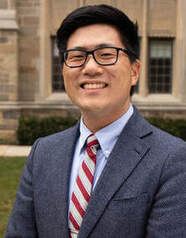

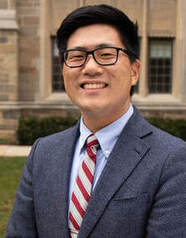
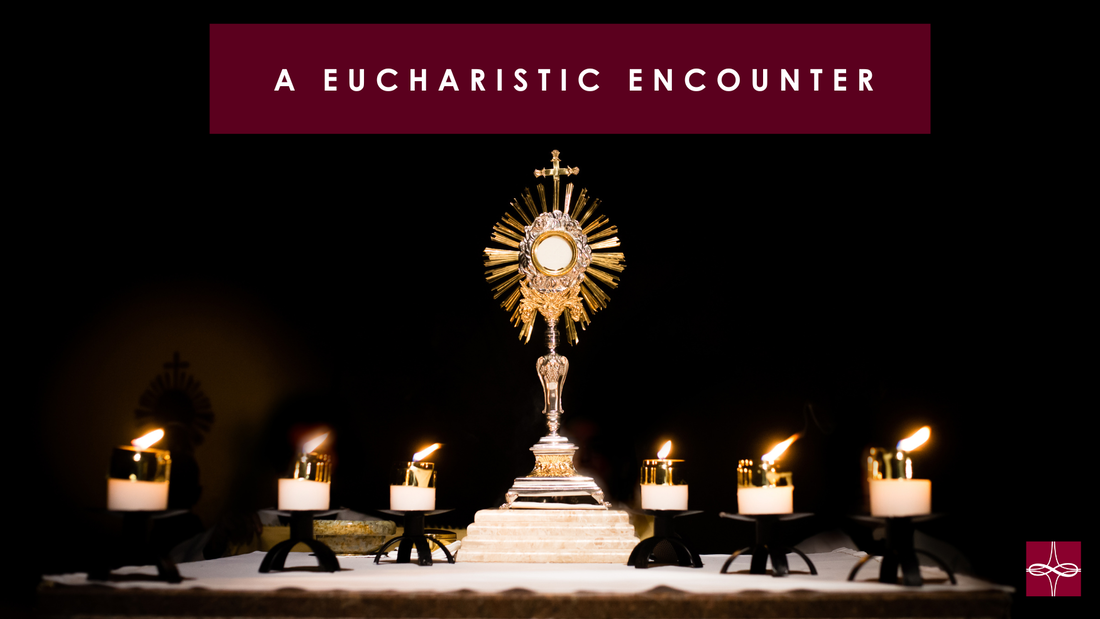

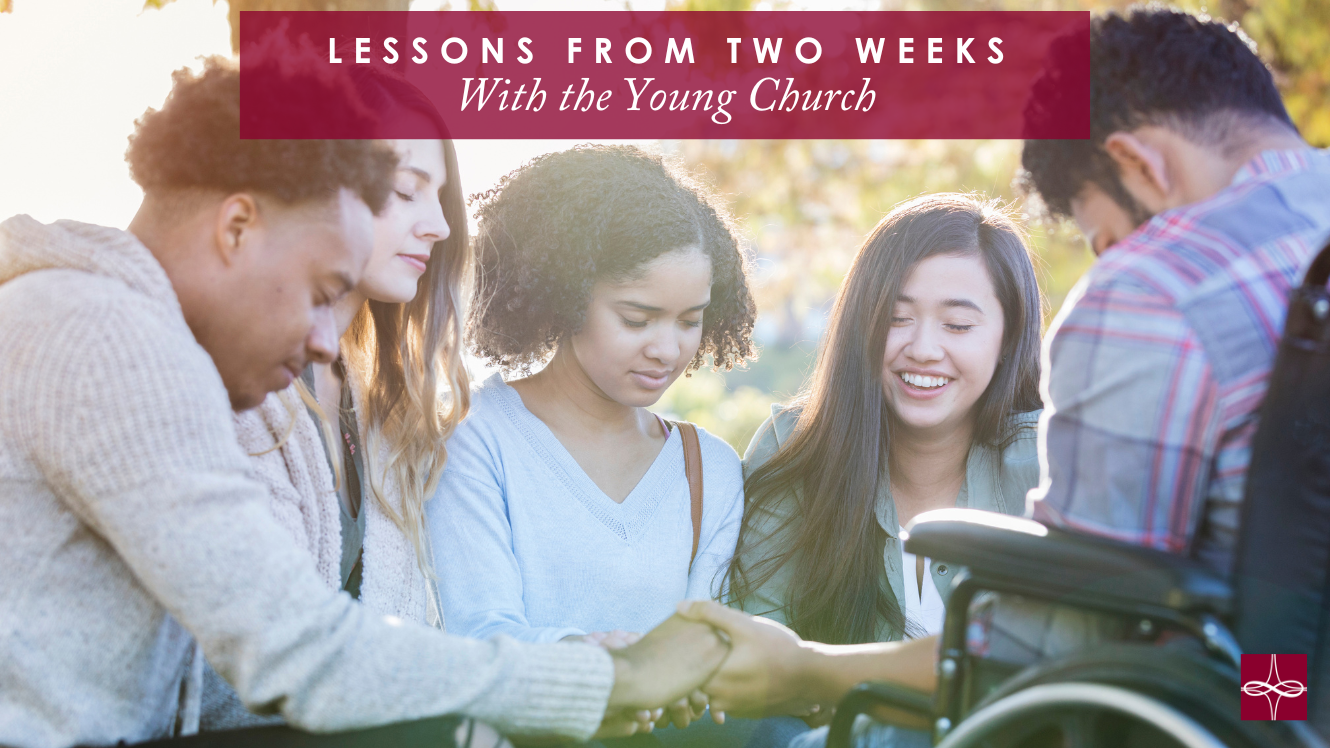
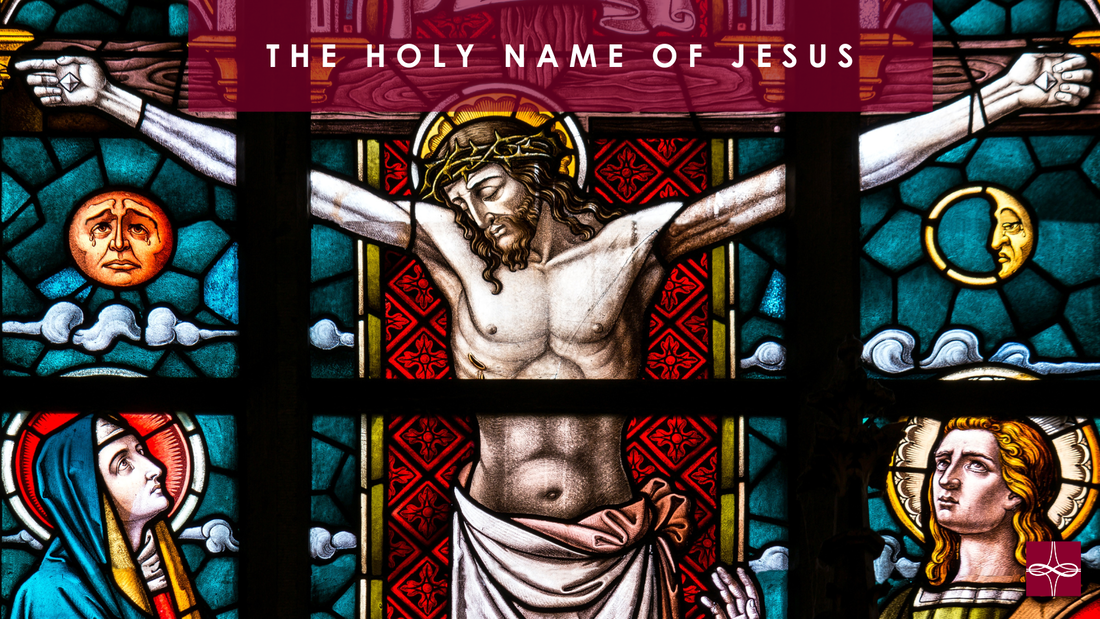
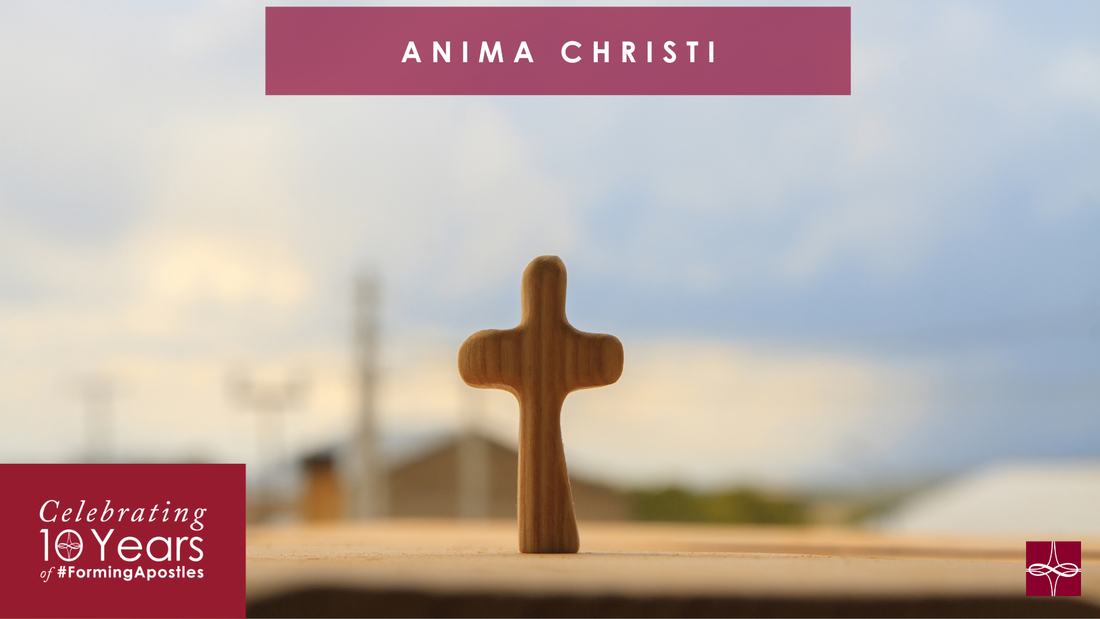
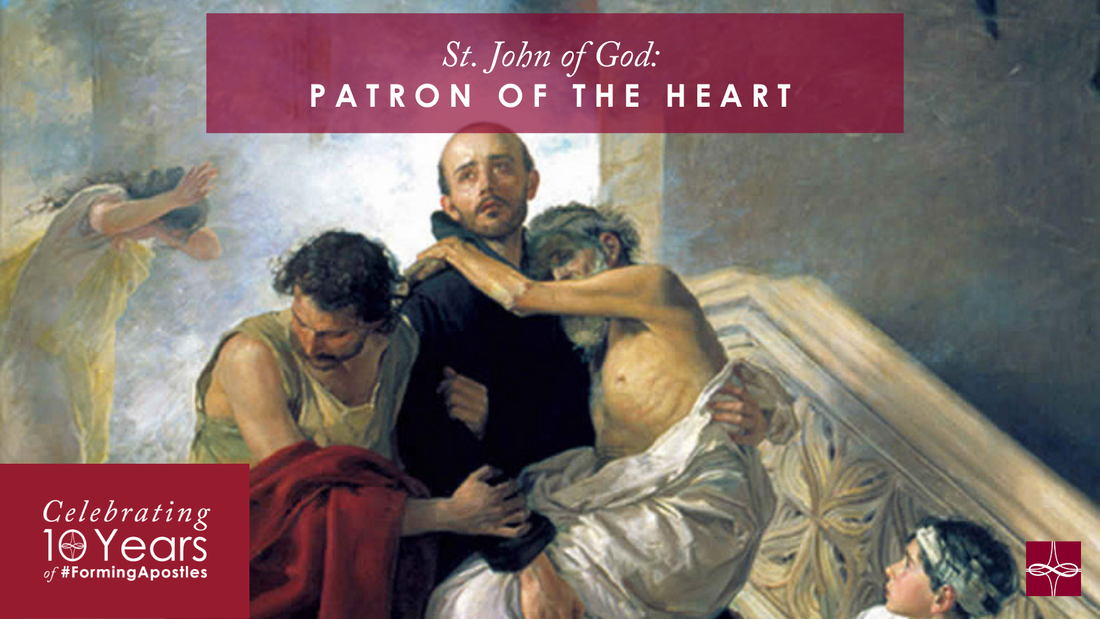
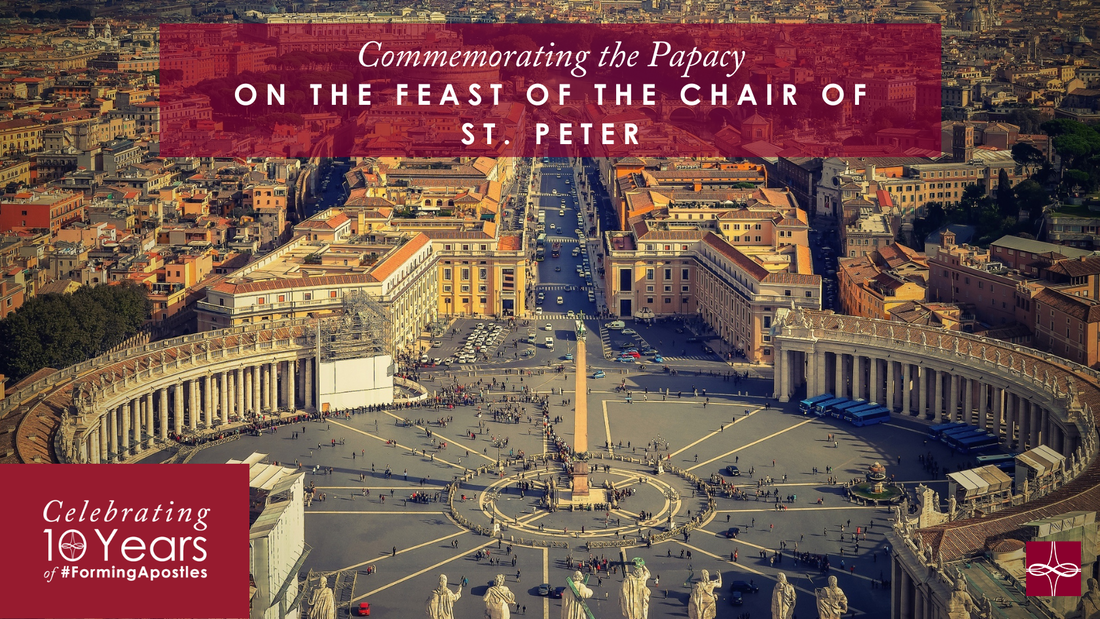
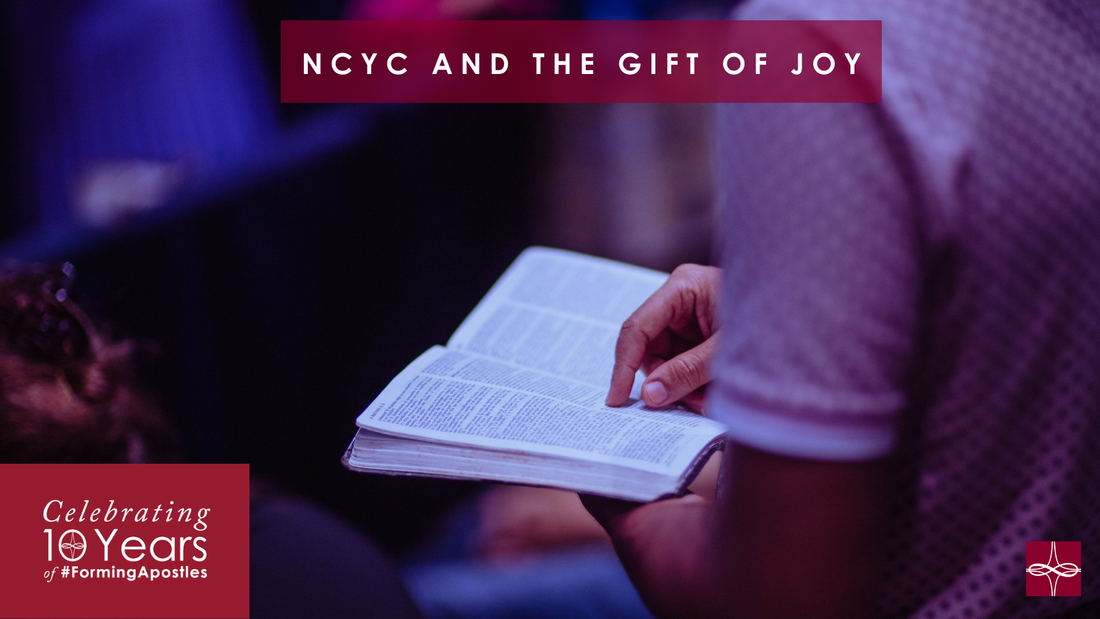
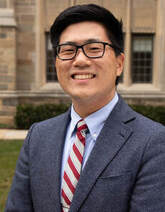
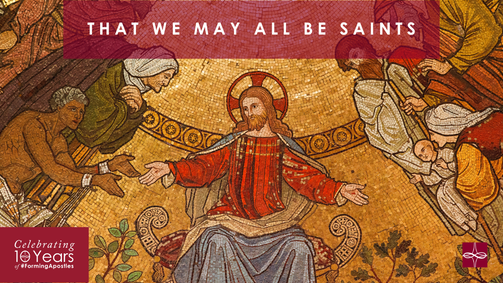
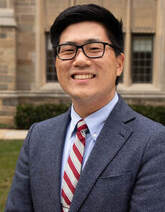
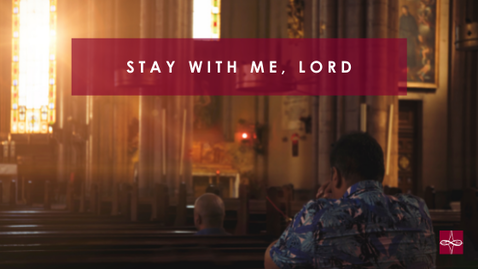
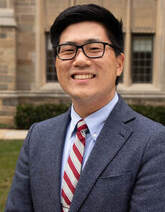
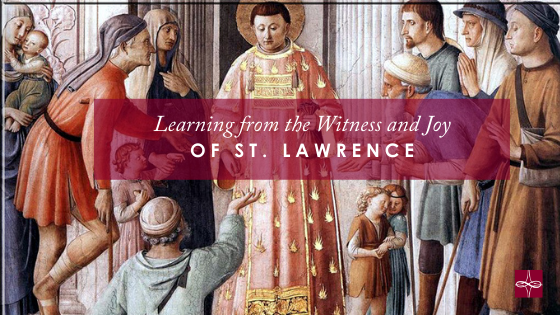


 RSS Feed
RSS Feed